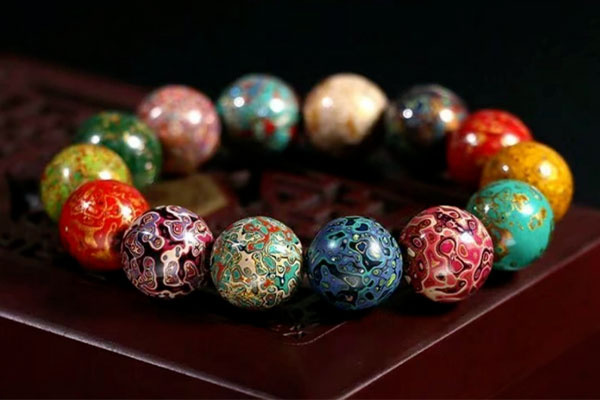Chinese Intangible Cultural Heritage - Lacquer Art
Introduction
Lacquer art is an important component of traditional Chinese arts and crafts, utilizing natural lacquer as the primary material to create both artistic and functional objects through various techniques such as coating, painting, inlaying, and carving. China is recognized as the earliest country to discover and use natural lacquer, with its lacquer art renowned worldwide for its unique material aesthetics and exquisite craftsmanship. In 2006, the decorative techniques of lacquerware were inscribed on China's National Intangible Cultural Heritage List.
Historical Development
Early Development (Neolithic Age-Han Dynasty)
- Red lacquer bowl unearthed at Hemudu site (approximately 7,000 years old)
- Emergence of lacquer inlay techniques during Shang and Zhou dynasties
- First peak of lacquer craftsmanship during Warring States period (lacquerware from Marquis Yi of Zeng's tomb)
Golden Age (Tang-Ming Dynasties)
- Development of gold and silver pingtuo technique in Tang Dynasty
- Maturation of carved lacquer in Song Dynasty
- Appearance of master craftsmen's signatures like "Zhang Cheng" in Yuan Dynasty
- Systematic documentation of lacquer techniques in Xiushi Lu during Ming Dynasty
Modern Development
- Imperial lacquerware reaching zenith in Qing Dynasty
- Traditional lacquer art facing preservation crisis in 20th century
- Contemporary revival and innovative development
Major Schools
| School | Region | Characteristics | Representative Techniques |
|---|---|---|---|
| Beijing Carved Lacquer | Beijing | Rich layers, exquisite carving | Tihong (red carving), Ticai (multicolor carving) |
| Fuzhou Bodiless | Fujian | Lightweight yet sturdy, diverse forms | Jiaozhu technique (cloth-bodied) |
| Yangzhou Mother-of-Pearl | Jiangsu | Delicate inlay, dazzling effects | Thin-shell mother-of-pearl |
| Pingyao Polished | Shanxi | Glossy surface, gold painting | Polishing technique |
| Sichuan Lacquerware | Sichuan | Ornate decoration, local characteristics | Carved filling |
Cultural Values
- Artisan Wisdom: Demonstrates extraordinary creativity of ancient Chinese craftsmen
- Aesthetic Value: Unique expression of Eastern aesthetics
- Life Philosophy: Perfect integration of utility and art
- Material Science: Profound understanding of lacquer properties
- Cultural Exchange: Spread worldwide via Silk Road
Core Techniques
Body Making
- Wooden body
- Cloth-bodied (Jiaozhu)
- Metal body
- Ceramic body
Decorative Methods
- Color painting
- Carved lacquer (Tihong, Tixi, etc.)
- Inlay (mother-of-pearl, gold/silver)
- Lacquer relief
- Gold tracing
Surface Treatment
- Polishing
- Wiping clear
- Glazing
Preservation Efforts
- Successor Training: Establishing master studios and heritage bases
- Technique Documentation: Systematically archiving traditional craft knowledge
- Innovative Development: Integrating with modern design concepts
- Exhibition: Hosting thematic exhibitions and craft demonstrations
- Education: Incorporating into college arts and crafts curriculum
Chinese lacquer art carries thousands of years of craft tradition and cultural wisdom. Its unique material language and artistic expression not only represent a treasure of traditional Chinese culture but also provide abundant inspiration for contemporary art and design.







